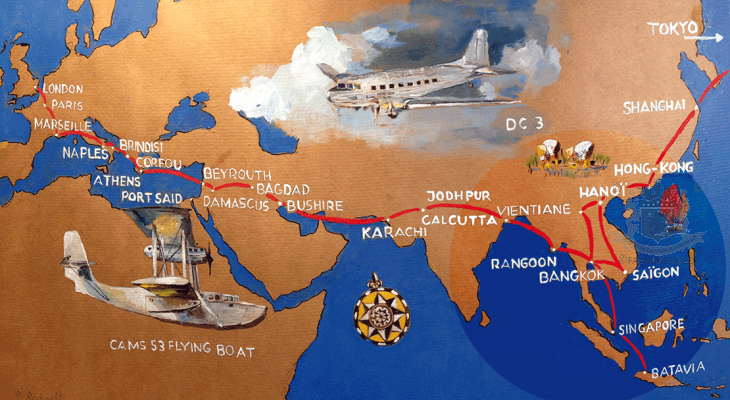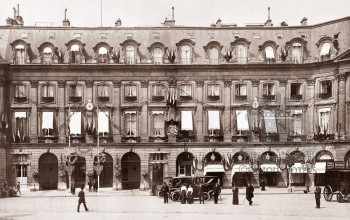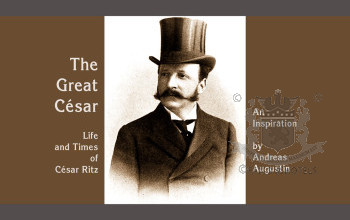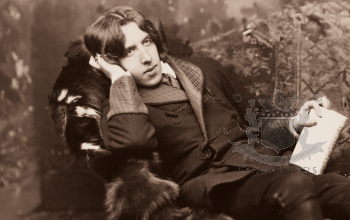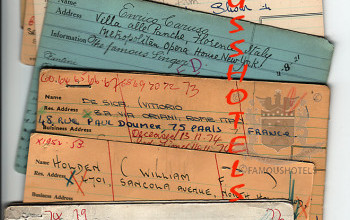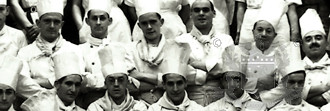Around the World in 80 Hotels (1)
( words)
In our journey we travel around the world to 80 hotels. The first part takes us from England to Scotland.
Andreas Augustin
PART 1: From England to Scotland
Strolling through Mayfair, Knightsbridge, and rambling into the West End, chances are that you pass by at least one of The Most Famous Hotels in the World. In London we list various hotels, among them The Dorchester, Claridges, Berkely, Connaught, Hyde Park, Ritz, the privately owned The Goring, the city’s oldest The Browns Hotel (1837), and more recently, the London Hilton on Park Lane, which turned 50 in 2013 (50 = one of the benchmarks for being considered by the jury of The Most Famous Hotels in the World).
London with its archives, public libraries and private collections provided all the rich material one needs to create inspiring books. In the late 1990s, we put up at The Savoy, researching the history of the city and digging into the archives of the hotel. Together with my friend Andy Williamson (picture), the English historian – I wrote the book The Savoy London. Susan Scott, the hotel's archivist, opened the archives (at that time still at the hotel– gladly we scanned it all). We spent days and nights in it, before we — after weeks of research — returned the keys.
Together with my friend Andy Williamson (picture), the English historian – I wrote the book The Savoy London. Susan Scott, the hotel's archivist, opened the archives (at that time still at the hotel– gladly we scanned it all). We spent days and nights in it, before we — after weeks of research — returned the keys.
The hotel was opened in 1889 by theatre impresario Richard D'Oyly Carte, the man behind the Gilbert&Sullivan operettas. D'Oyly Carte, a man with extensive experience of staging operettas, knew that he needed a star for the leading part in this hotel. So he engaged a young hotelier on the rise, somebody who had shown his talents in various hotels on the continent. His name was César Ritz. He became the Savoy’s first general manager, who understood that a grand hotel is a perfect opportunity to stage this play called “Grand Hotel”.

The Savoy London's archives reveal some of the guest history cards of its famous patrons. Actress Marlene Dietrich, for example, expected 12 pink roses and a bottle of Dom Perignon upon arrival.
The other thing he was aware of was that fine food is the second most important thing. At that time London wasn’t the cradle of fine food. Hundreds of Britons left the island every year starving for the cuisine of France and the rest of the continent (well, it wasn't only for the food. Let’s call it ‘cultural diversion’). Lead by the Prince of Wales, Albert Edward, who had little to do as his mother, Queen Victoria, had no intention to give up her post until she died after 63 years of reign, the landed gentry cum entourage spent more time on vacation in spas abroad than on their own island.
They preferrably went to locations that had the three characters B, A and D as part of their name. Tagline: "taking the waters". There was Wiesbaden, Bad Homburg, Baden Baden. Here the Prince of Wales had met again the (eager for success) young Swiss César Ritz.
‘Your Royal Highness remembers? I had the honour of lighting your cigar at the Troi Frères Provençaux at the World Exhibition in Vienna?” The prince nodded friendly. No, he had no recollections about this Swiss chap who spoke English remarkably well. But from now on he would remember him.
Ritz lured Auguste Escoffier to London; the chef who would establish modern restaurant kitchen as we know it today. Escoffier came, cooked and conquered Britain. But he refused to learn English: ‘If I learn to speak as they do, I will start cooking as they do,” he said.
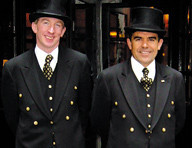 THE SAVOY — by Andreas Augustin and Andrew Williamson: I
THE SAVOY — by Andreas Augustin and Andrew Williamson: I
In the summer of 1889 – the days of Gilbert and Sullivan, the heroes of English operetta – The Savoy opened its doors. It was the creation of theatre impresario Richard D’Oyly Carte. He engaged the young César Ritz to run the hotel who in turn brought in Auguste Escoffier – the ‘Emperor of all chefs’. The Prince of Wales said 'Where Ritz goes, I go.' In 1898, Ritz and Escoffier had to go. After a century of confusion behind the fall from grace of this celebrated hotelier and his faithful chef this book discloses the sober facts.
Enrico Caruso sang at The Savoy, ‘The Pavlova' danced there (see large picture at top of this page) Sarah Bernhardt, Oscar Wilde and Dame Nellie Melba of Pêche Melba fame (created at The Savoy) – made it their London residence. Hollywood arrived. The  American Bar became the watering hole of prohibition refugees. Every Prime Minister chose The Savoy as a refuge of privacy (Sir Winston Churchill founded ‘The Other Club’ at The Savoy, which still meets here). This book talks about the people who created this legend. The personalities who make The Savoy one of the most successful and famous hotels in the world. The stars of yesteryear parade through these pages and meet the names of today. From Chaplin to Pavarotti, Joplin Sinclair to Oskar Kokoschka, from James Bond to Harry Potter – this is the place to be seen, to party, or to hide. The choice is yours.
American Bar became the watering hole of prohibition refugees. Every Prime Minister chose The Savoy as a refuge of privacy (Sir Winston Churchill founded ‘The Other Club’ at The Savoy, which still meets here). This book talks about the people who created this legend. The personalities who make The Savoy one of the most successful and famous hotels in the world. The stars of yesteryear parade through these pages and meet the names of today. From Chaplin to Pavarotti, Joplin Sinclair to Oskar Kokoschka, from James Bond to Harry Potter – this is the place to be seen, to party, or to hide. The choice is yours.
Wherever you go, try to stay at the most famous hotel, even if you can only afford the smallest room!'
Aristotle Onassis, a Greek who rose to become one of the world's most wealthiest men
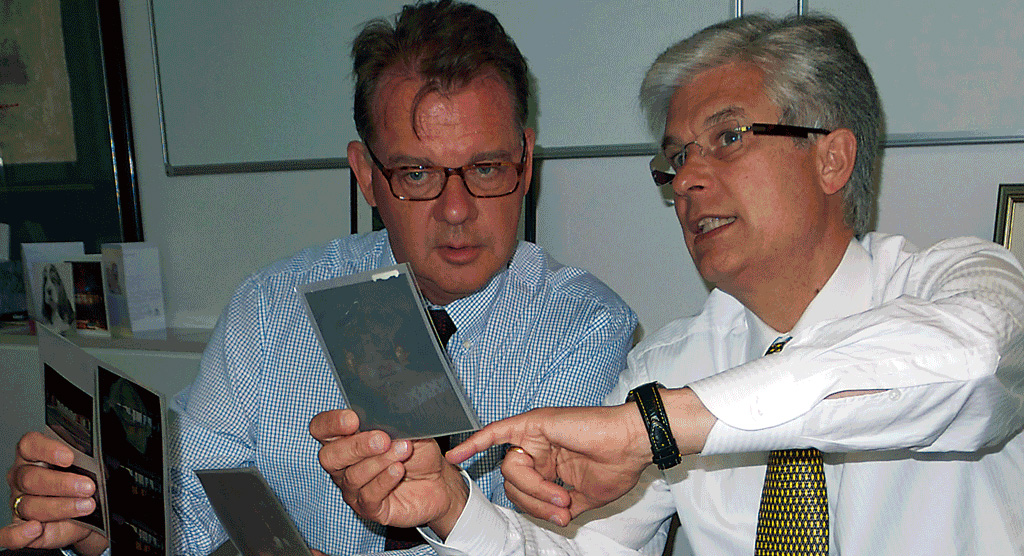 Overlooking Hyde Park, London Hilton on Park Lane "stands tall but never still" (courtesy general manager Michael Shepherd in the photo to the right; selecting pictures with the author of LONDON HILTON ON PARK LANE). In 1963, when it opened its doors, the London Hilton was a novelty, a sensation, a scandal perhaps, but certainly a temptation.
Overlooking Hyde Park, London Hilton on Park Lane "stands tall but never still" (courtesy general manager Michael Shepherd in the photo to the right; selecting pictures with the author of LONDON HILTON ON PARK LANE). In 1963, when it opened its doors, the London Hilton was a novelty, a sensation, a scandal perhaps, but certainly a temptation.
The hotel revolutionised British hospitality. A suite on its upper floors became the most sought-after accommodation in the city on the River Thames. Today snapshots from its rooftop restaurant are shared on social networks round the clock, and no visit to London is complete without having been to Trader Vic’s. Moreover, for generations of young hoteliers the world over, London Hilton on Park Lane served as a training ground.
1963: the opening year of the London Hilton in a colourful cloude. Open and enlarge it in a new window with a mouse-right-click.
This book takes you from the first idea for the hotel to the first visit of Her Majesty, The late Queen (who was NOT amused to see that giant tower rising from her windows of Buckingham Palace). It spans from the Hilton’s early days as the centre of 1960s Swinging London to its recent role as the headquarters of the Olympic Games. Three hundred photographs illustrate the progress of the hotel on Park Lane, from a luxurious skyscraper, filled with modern novelties, to one of the most famous hotels in the world.
Before we board our train north, we arrive at Paddington station. There stands the GREAT WESTERN ROYAL HOTEL, today the Hilton London Paddington. It's history started in 1854, it was the wrold's first palatial terminus hotel. We owe the fact that it still stands Gulshan Bhatia and her son Asif, who were Indian political refugees from Tanzania, East Africa. They arrived in the UK on 24 September 1976- From then on it was hard work all the way up, starting with a small hotel: "I always knew that one day I want to buy the Great Western!" In 1986, when the grand old lady went into receivership, the Bhatias mobilised £10m, and bought it. In 2002 we researched its history (from Isambard Kingdom Brunel, England's famous railway engineer, to Paddington, England's famous bear) and produced a book about it.
You must try the Royal Scotsman, a superb little luxury train with overnight compartments and a restaurant car. It took me into the capital of Scotland. Edinburgh boasts two railway hotels; one, The Caledonian, which became my home for some while when I wrote its history. In fact, it was the Scottish author Roddey Martine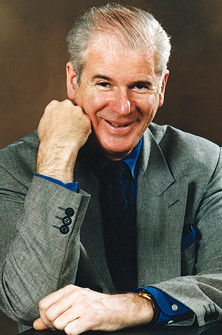 (photo) who wrote most of it, while I enjoyed Edinburgh. I went out to explore the hidden layers of the ancient city, strolled through the streets and parks and finally fell in love with a Reverend, a certain Robert Walker, Skating on Duddingston Loch. He is better known as The Skating Minister, and it is an oil painting by Sir Henry Raeburn in the National Gallery of Scotland in Edinburgh. The gallery is in a park ideally situated between
(photo) who wrote most of it, while I enjoyed Edinburgh. I went out to explore the hidden layers of the ancient city, strolled through the streets and parks and finally fell in love with a Reverend, a certain Robert Walker, Skating on Duddingston Loch. He is better known as The Skating Minister, and it is an oil painting by Sir Henry Raeburn in the National Gallery of Scotland in Edinburgh. The gallery is in a park ideally situated between 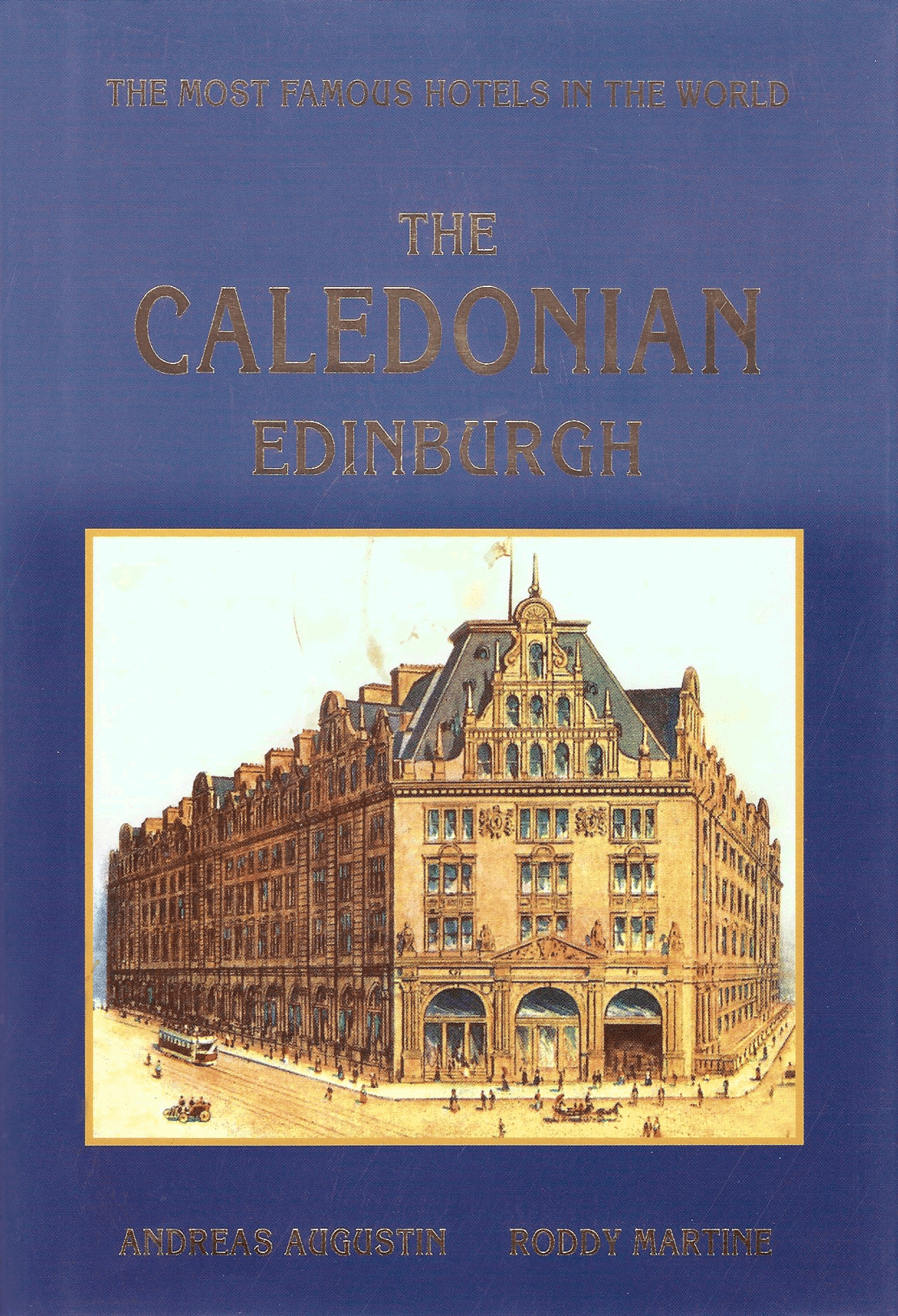 The Caledonian and the other grand hotel of the Scottish capital, The Balmoral. We also list, of course, all the legendary golf hotels of the rest of Scotland.
The Caledonian and the other grand hotel of the Scottish capital, The Balmoral. We also list, of course, all the legendary golf hotels of the rest of Scotland.
The Caledonian — the book:
By the end of the 19th century, Scotland had become the land of artists and poets, engineers and inventors. The Caledonian Railway had brought a new pace of life to the capital South of the Firth of Forth. In 1903 Princes Street Station was to become the base for a grand hotel. The Caledonian Hotel helped to consolidate Scotland’s position on the international stage by heralding a new era of luxury and travel in Scotland.
‘Of course this is a book about the Caledonian Hotel, but it is also a social study and a well cut synopsis of the history of Edinburgh.’
The Herald
Its most famous patrons, its managers, the staff of yesterday and today: in this book they all parade proudly through the pages and tell their stories, which, like many raindrops swelling to a stream, come together to form the story of The Caley, as this wonderful old hotel is affectionately known.
Read more Around the World in 80 hotels —
* Andreas Augustin is a writer and traveler, and the president of The Most Famous Hotels in the World, an organisation founded to safeguard the history and cultural heritage of all legendary hotels around the world.
Hotels are listed independently, following the statutes of The Most Famous Hotels in the World.
All hotels were chosen by the honorable jury, regardless of their geographical location, their brand, their political environment and their commercial success.

